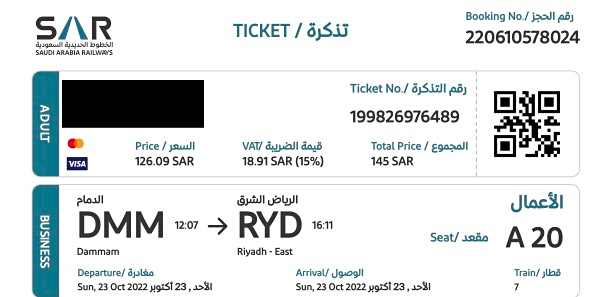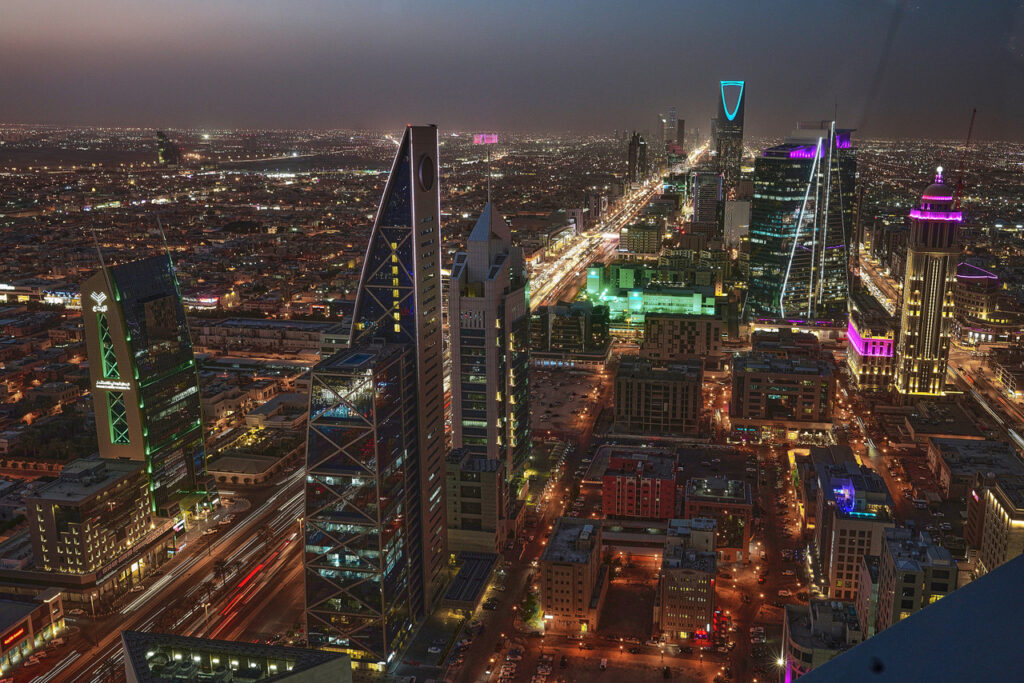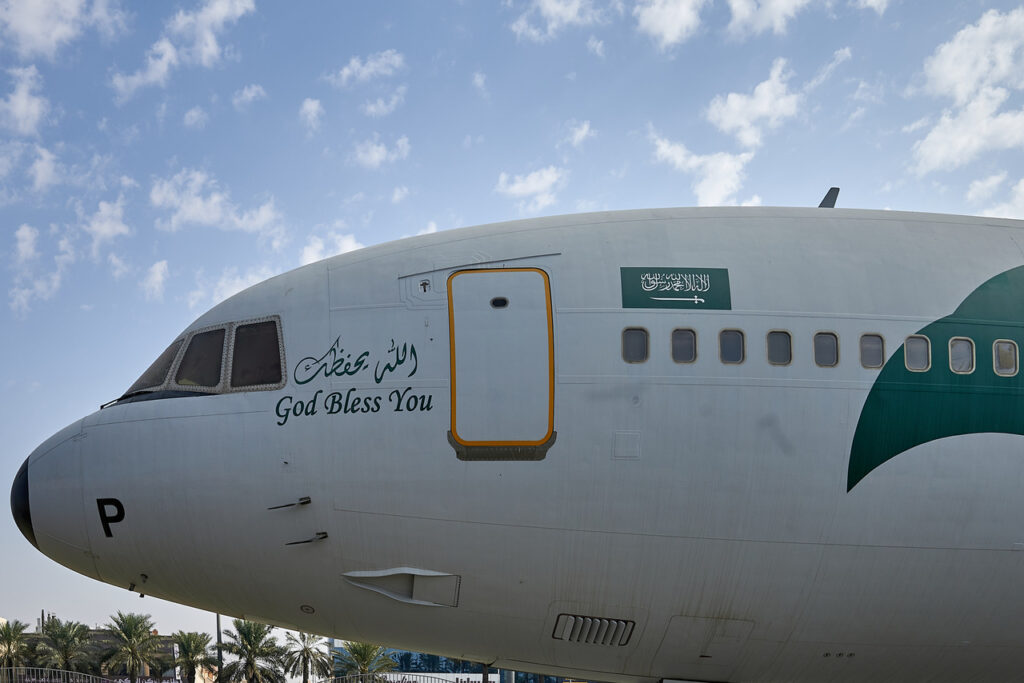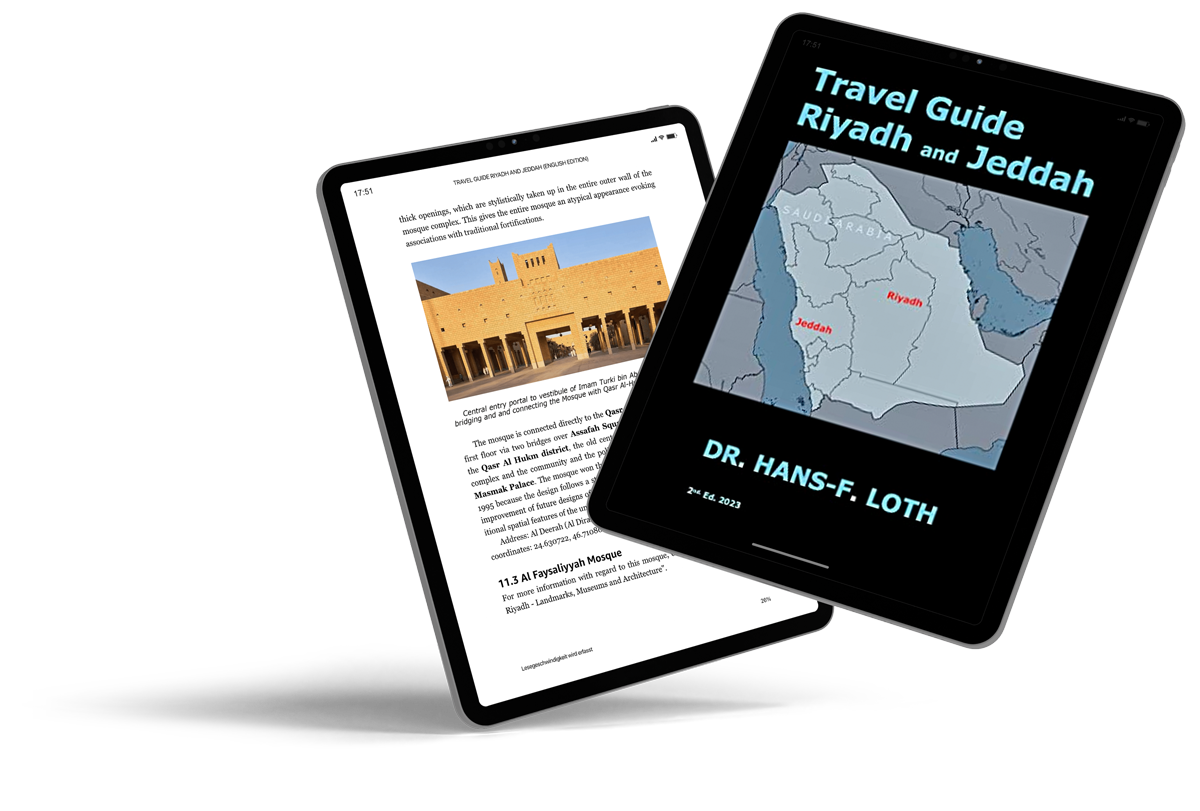Riyadh – a Car-Friendly City
In Riyadh, there are thousands of kilometers of, generally well-developed roads, including the King Fahd Highway (north-south) and the Makkah Highway (east-west), which form the city’s two main axes. With its grid system of wide thoroughfares and expressways, modern Riyadh was designed as a car-friendly city. The private car traffic is simply huge.
Taxis and On-Demand-Ride Services
If you haven’t taken a rental car, taxis (cabs) are still the main and reasonably inexpensive mode of transportation in Riyadh besides the ride-on-demand services that have been operating for a few years.
There are white and green cabs, all with meters; the different color means there are two different cab companies behind them. The green cabs tend to be a bit larger and “cleaner”, although the description “uninviting” probably applies more to all cabs. The cab drivers are almost exclusively migrant workers and often not very polite. The seat belts on the rear bench seats are generally unusable, as the bench seats almost always have a more or less neat protective cover that hides the seat belt buckle. Fares are sometimes very different if you go on a trip without a taximeter. The “voice communication” with the cab driver usually goes like this: you enter the destination into the map app of the driver’s smartphone and he drives with this navigation aid; this works surprisingly smoothly. From June 2022, all cab drivers would actually have to wear a specific uniform – but this had not been implemented by March 2023.
On-demand-ride services, such as Uber and Careem, are also a common mode of transportation in Riyadh. However, ordering such a service can take a few minutes due to traffic congestion, so choosing a passing cab is often the quicker solution. In my own experience, the drivers of the ride services in Riyadh were often not helpful in loading or unloading a suitcase – even if the passenger is old and toddle and has difficulty lifting the suitcase over the edge of the trunk; nor was there any particular courtesy.
Bus Services
There are also local buses, but their previous and established main function is to transport low-income workers from their neighbourhoods (usually in and around the city center) to jobs in other parts of the city. See also below: Metro
Railways Services
Rail transportation is becoming prestigious in Saudi Arabia. The expansion of the rail network serves to accelerate economic and tourism development throughout the country. The approximately four-hour journey from Riyadh to Dammam through the thoroughly varied desert, for example, is quite an experience. This route is about 730 km (455 mi) long.
Timely online booking, i.e. several weeks before the actual trip, is strongly recommended as trains are often fully booked due to the rather low train frequencies. There are no trains on Fridays, and on Saturdays the number of trains is limited compared to weekdays.
The railroad company is Saudi Arabia Railways (SAR) https://tickets.sar.com.sa/
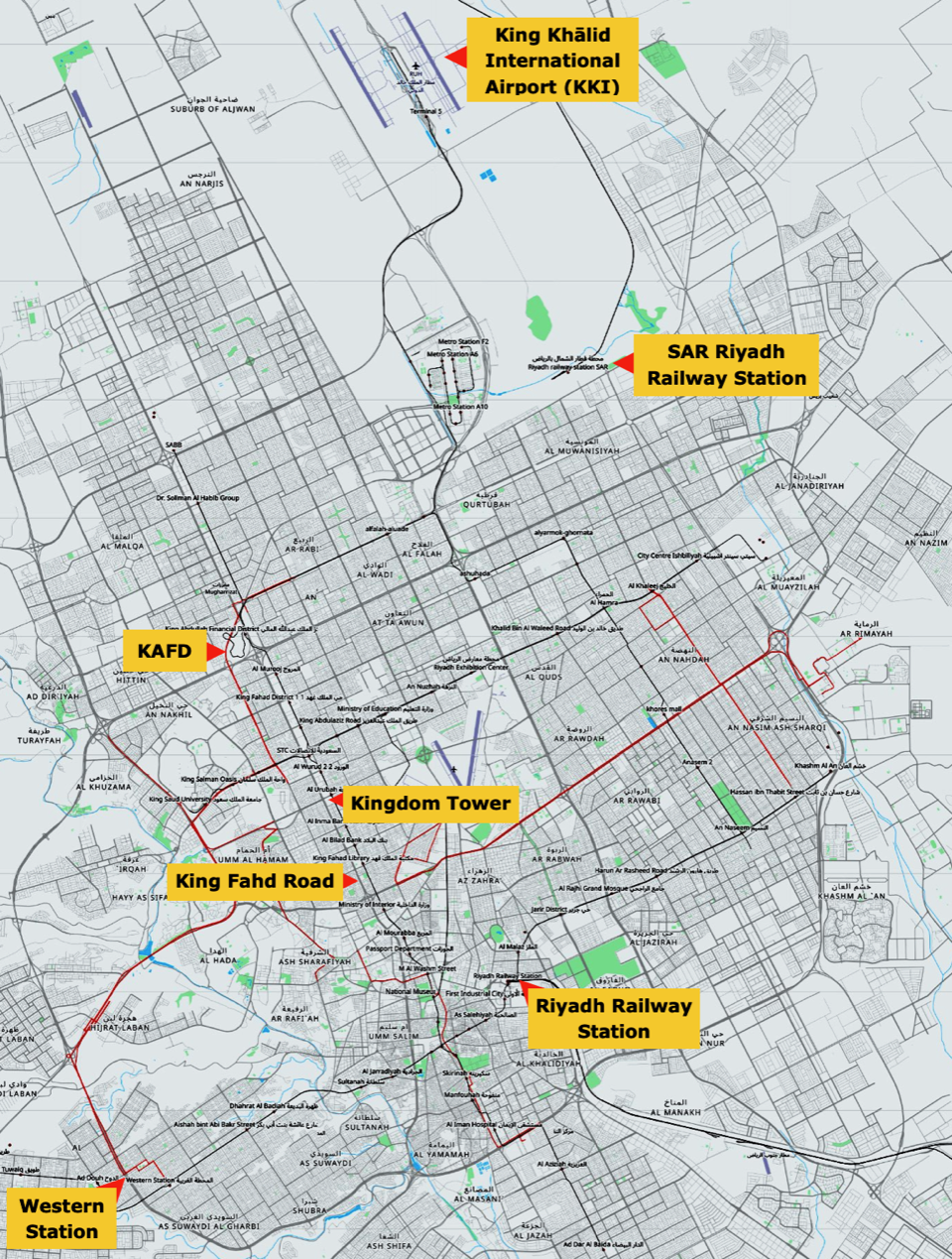
The northern line includes five stations: Riyadh, Majma’ah, Qassim, Hail, Al Jouf, and Qurayyat. It begins in Riyadh City, extends northwest toward Al Majma’ah City (southeast of Buraydah), passes through the regions of Qassim (northeast and closer to Buraydah), Hail, and Al Jouf, and is now partially in service from Riyadh-Qassim-Hail.
Address: 3612 King Khalid Airport, Unit 1, Riyadh 13422 – 7032, with GPS coordinates 24.855658, 46.764703. On the previous map it is marked as a station near the airport.
The eastern line operates between Riyadh and Dammam via Al Hofuf and Abqaiq. According to the SAR website, the first line has a length of 733 km (455 mi). The second line, 556 km long, is dedicated to freight transport. It starts at King Abdulaziz Port in Dammām and ends in Riyadh, passing through Abqaiq, Al Hofuf, Al Kharj, Haradh and Al Tawdhihiyah. A one-way ticket from Riyadh to Dammam in first class costs SAR 290.00 per adult (as of Nov. 2022).
Address: 12844 Omar Ibn Al Khattab Road, 12844 Hasan Alshawri, Riyadh with GPS coordinates 24.651348, 46.738834. It is shown as a valley station on the previous map.
Metro
A long overdue Metro with six lines covering 176 km and 85 stations is under construction. The opening of the first lines was scheduled for the end of 2022; in March 2023, a further postponement to the end of 2023 was assumed.
According to the metro authority, the lines cover most populous districts, government institutions, educational and commercial facilities. It is connected to King Khaled International Airport and King Abdullah Financial District, as well as major universities, the city center and the public transport hub. Trains will run automatically (without a driver). Users can expect state-of-the-art technology and highly aesthetic architecture of all stations. The network can be seen in the graphic below.
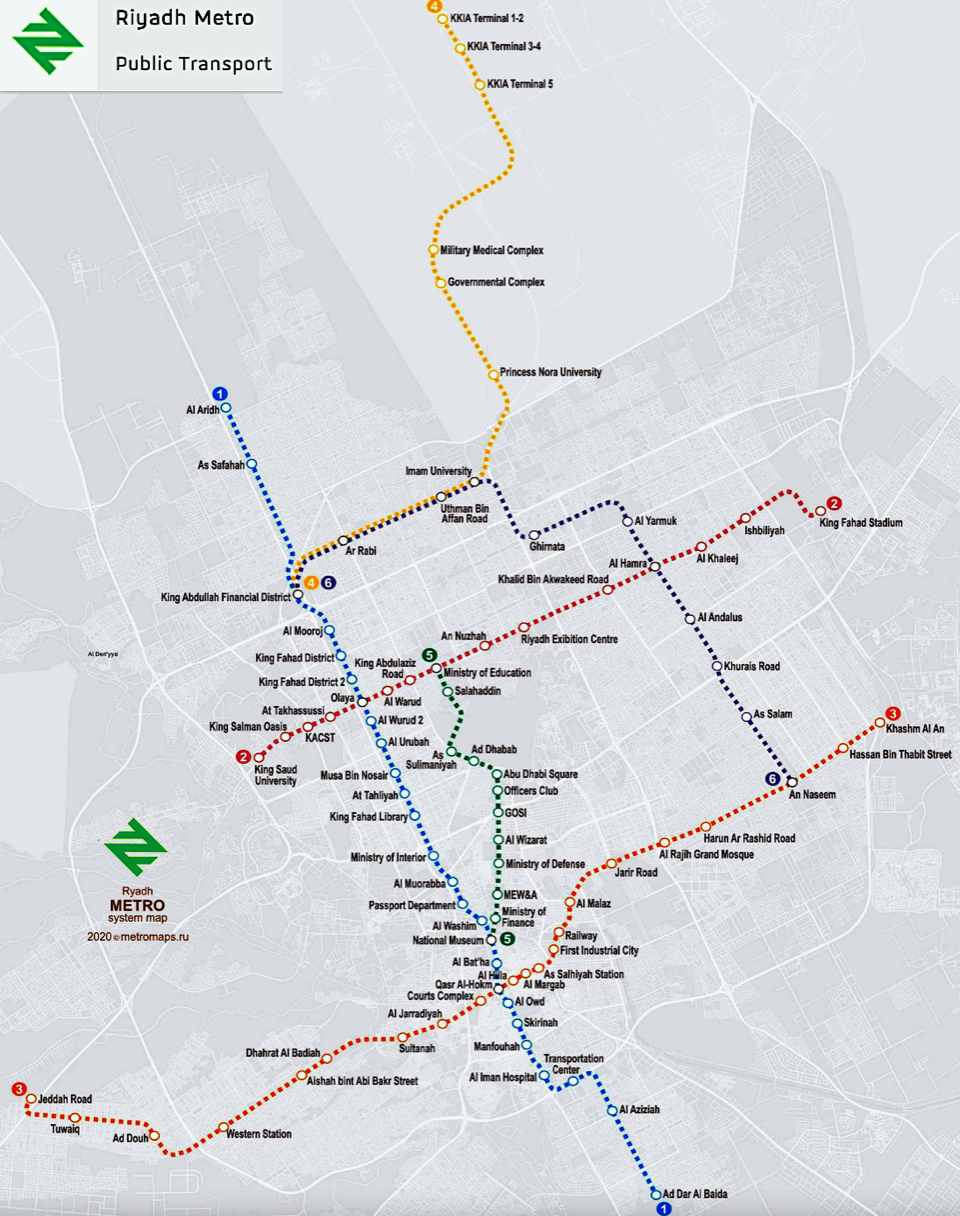
In addition, there will be the Riyadh bus network, which is integrated with the Riyadh metro network and is a public transportation system with many lines covering main roads, highways and secondary roads. The Riyadh bus network will allow you to move between metro stations to and from Riyadh, and it will also take you through the residential areas and future residential areas of the city. The network will be divided into what is known as 3 tiers, which will provide cascading tiered transport services, from main lines (Dedicated Bus Lines), to lines connecting district lines (Community Lines), to lines within residential areas (Feeder Lines).
